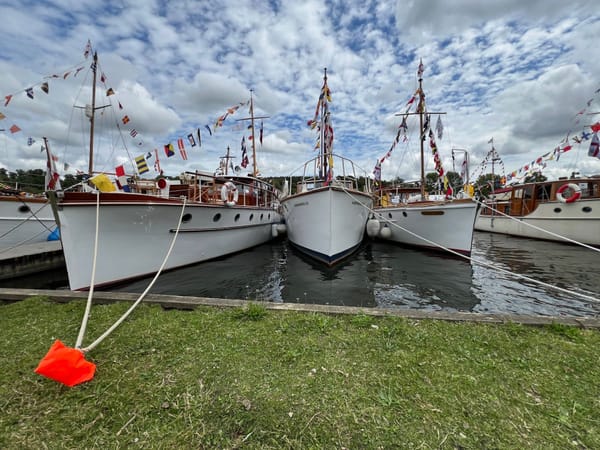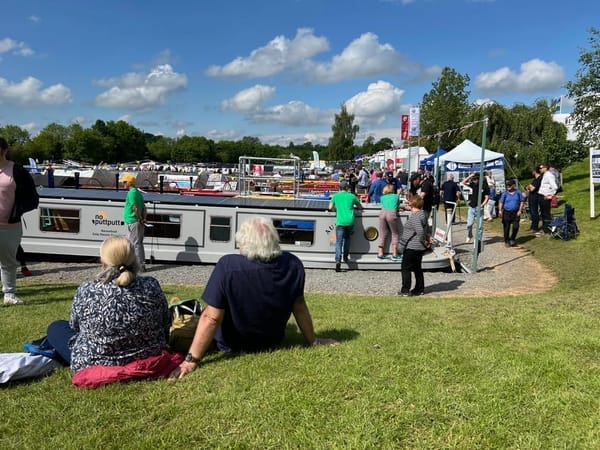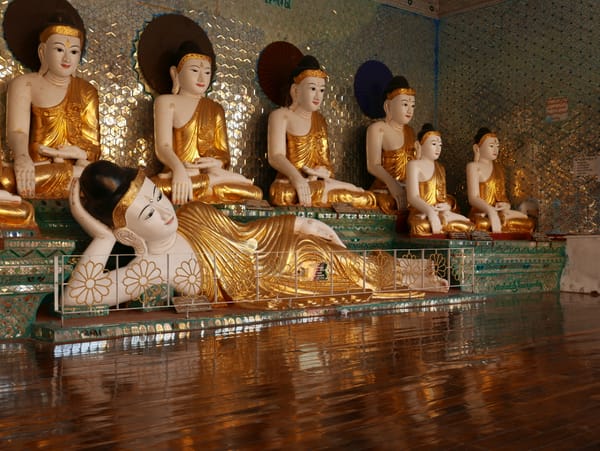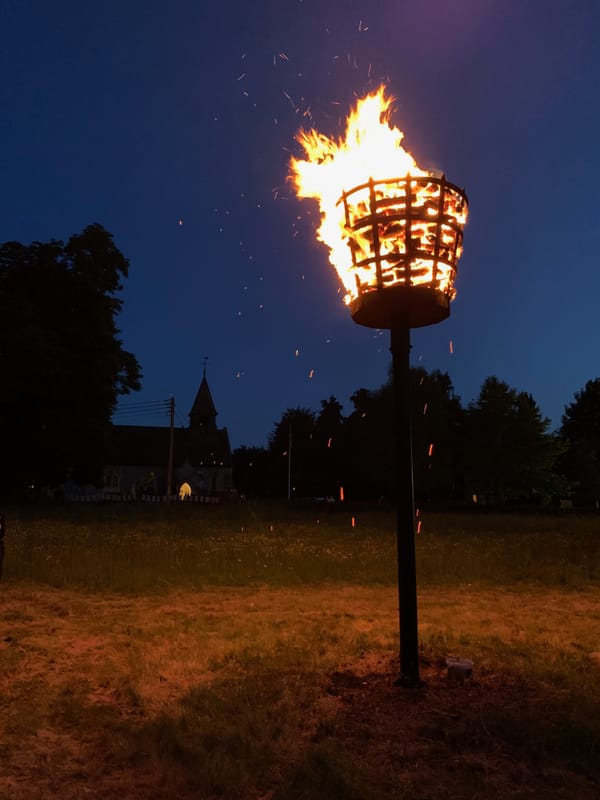Yellowstone National Park in the Winter — Day 3: Snowshoeing through the Upper Geyser Basin
A remarkable day in Yellowstone National Park
January 2014
Today we had the best weather on the trip. It was still very cold, but we had sunshine.
I thought day 2 was good — day 3 was even better.
We spent day 3 snowshoeing through the Upper Geyser Basin.
During the summer, the Old Faithful area is busy, very busy. But during the winter, the place was deserted. There was no one around. It was fantastic.
On the first morning, I looked out of my bedroom window, and there was no one. No tourists. I remember standing near the lodge in the summer and watching hundreds of tourists get off coaches and head across to see Old Faithful.
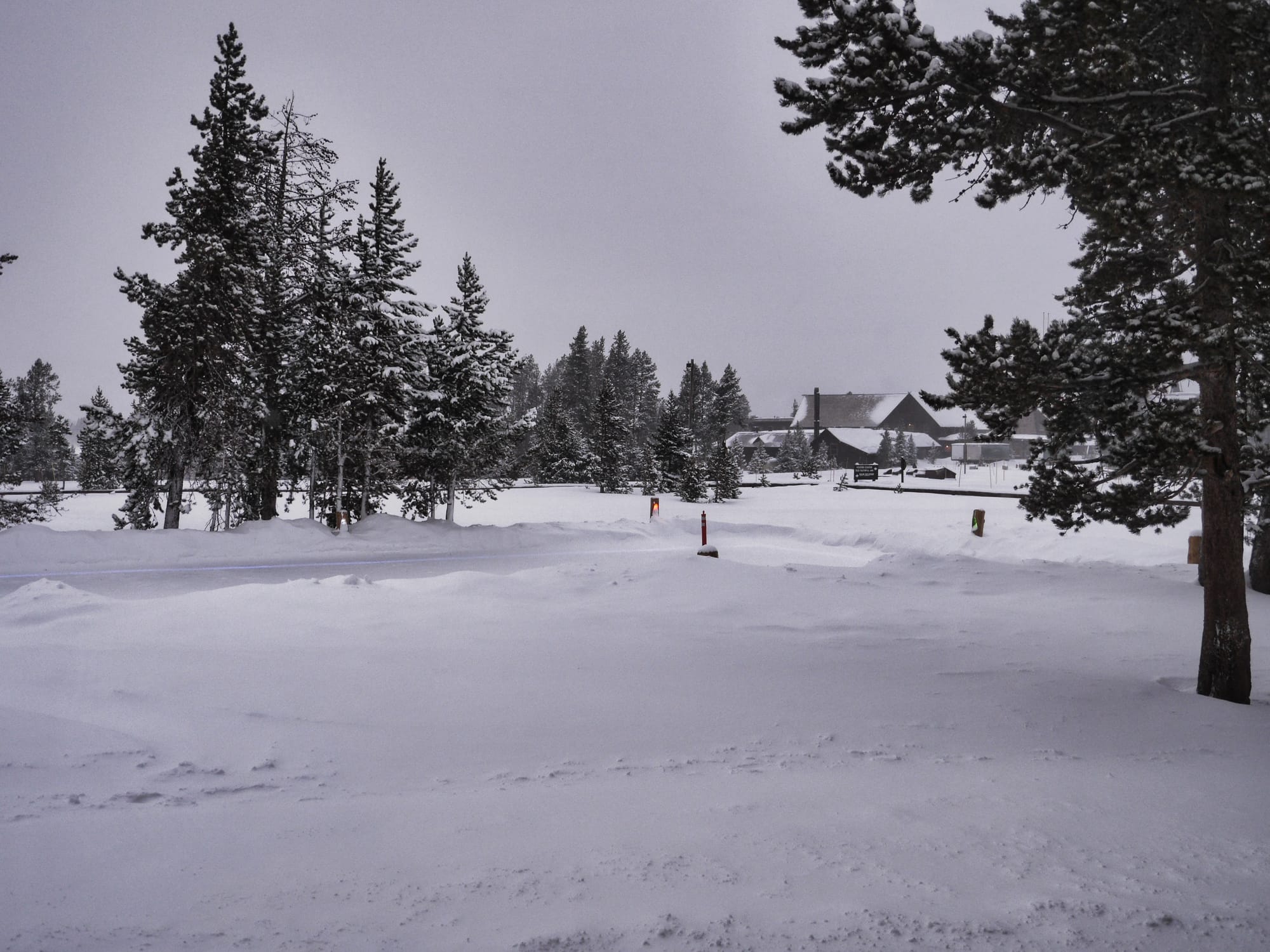
We picked up our snowshoes, I had a nice light aluminium pair, and we headed off with our guide, Amy.
And wow, what a day.
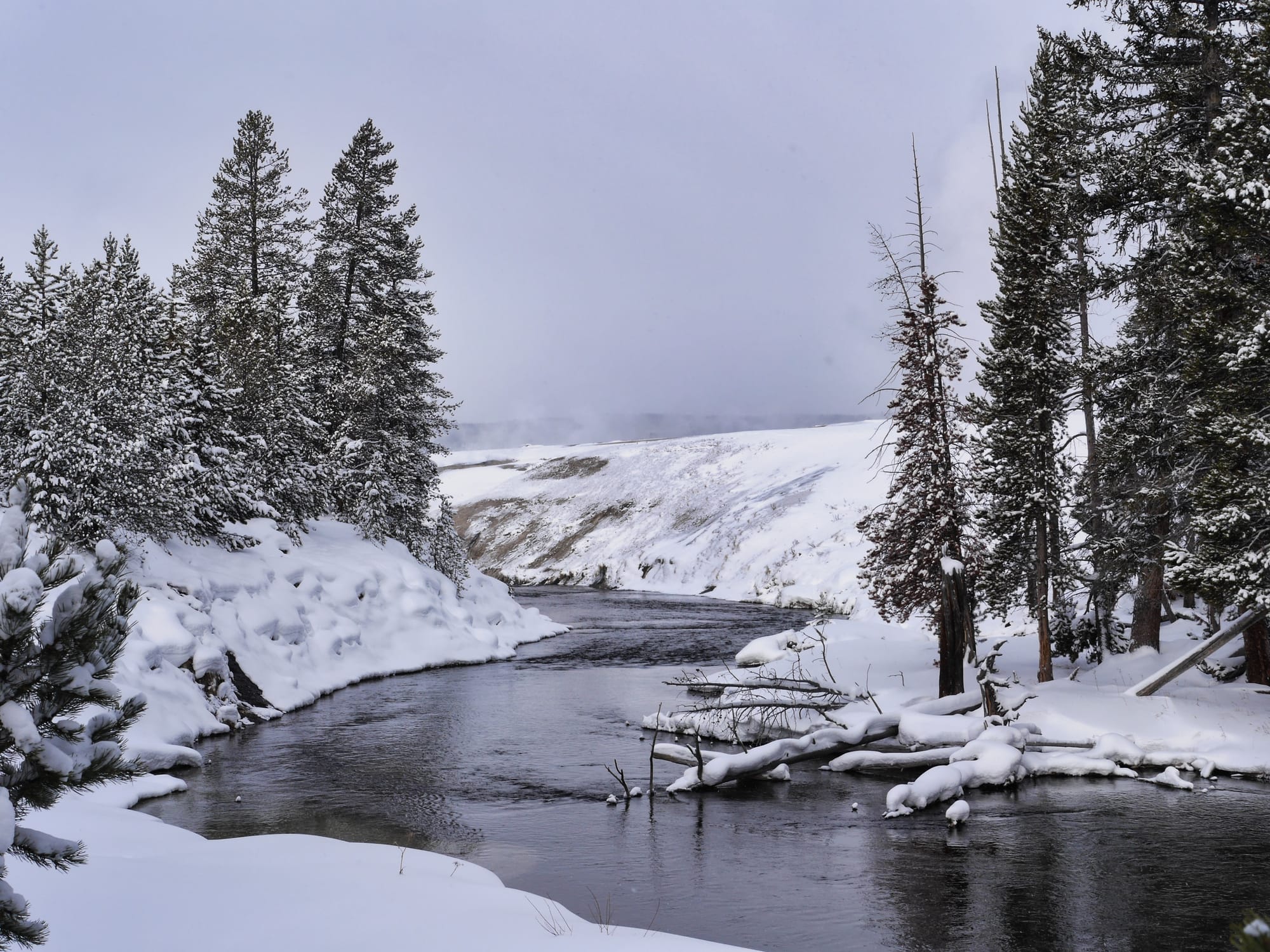
Everywhere we looked, there was steam and snow.
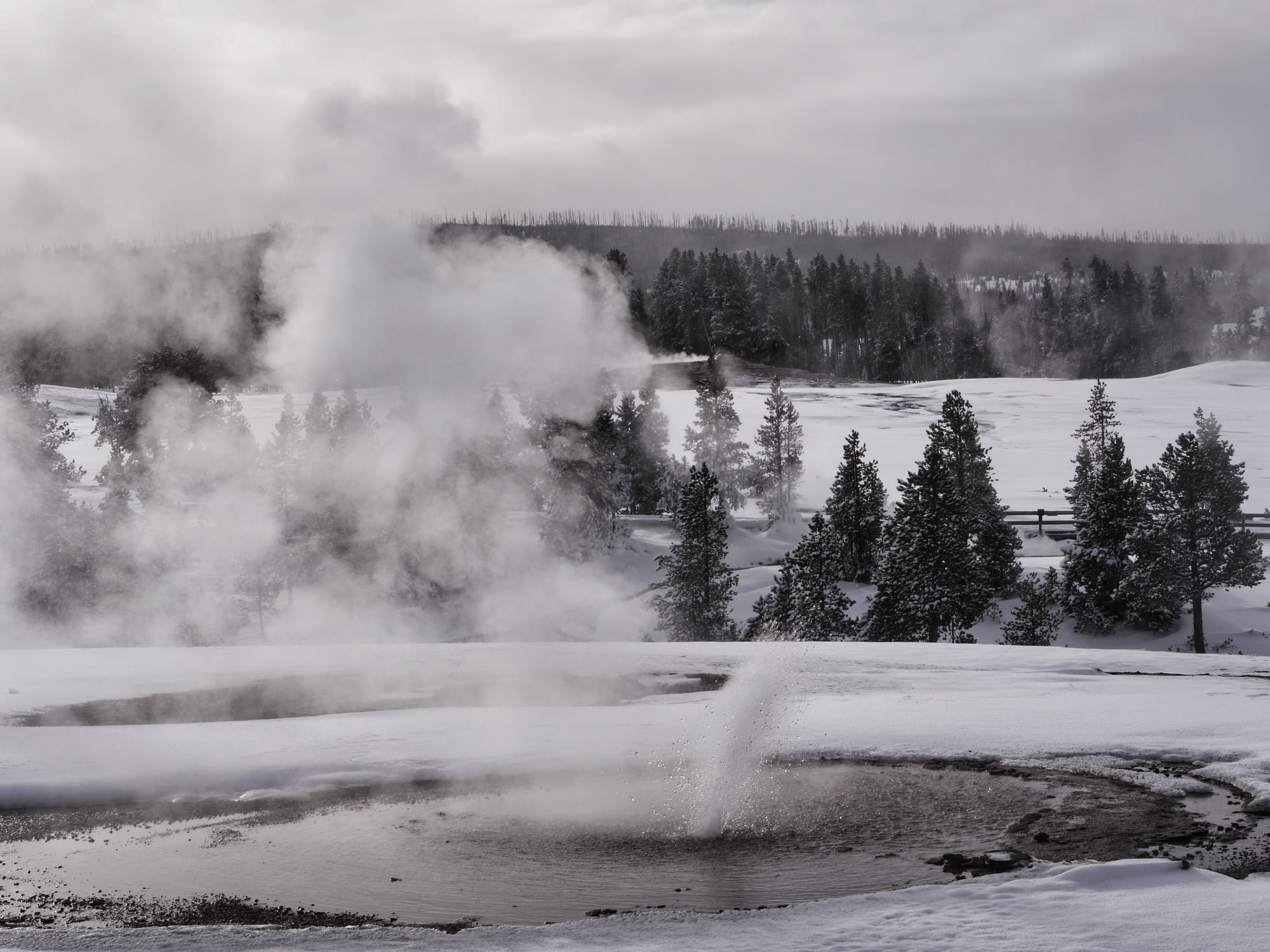
Geysers were burping and gurgling.
The colours of the precipitated salts around the geysers were even more impressive against the white snowy backdrop than in the summer.
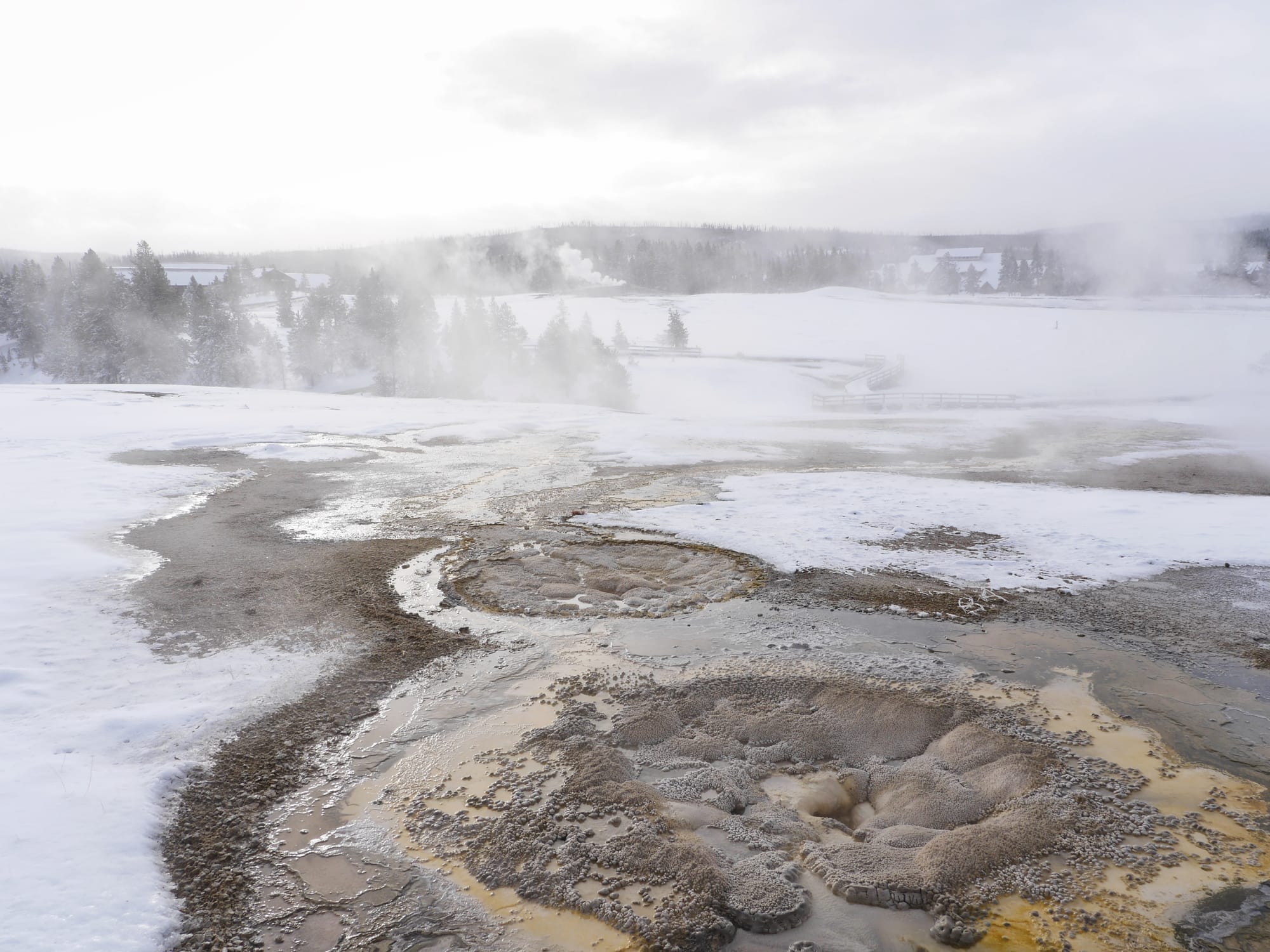
And again, I found the rock formations, the colours and the structures fascinating.
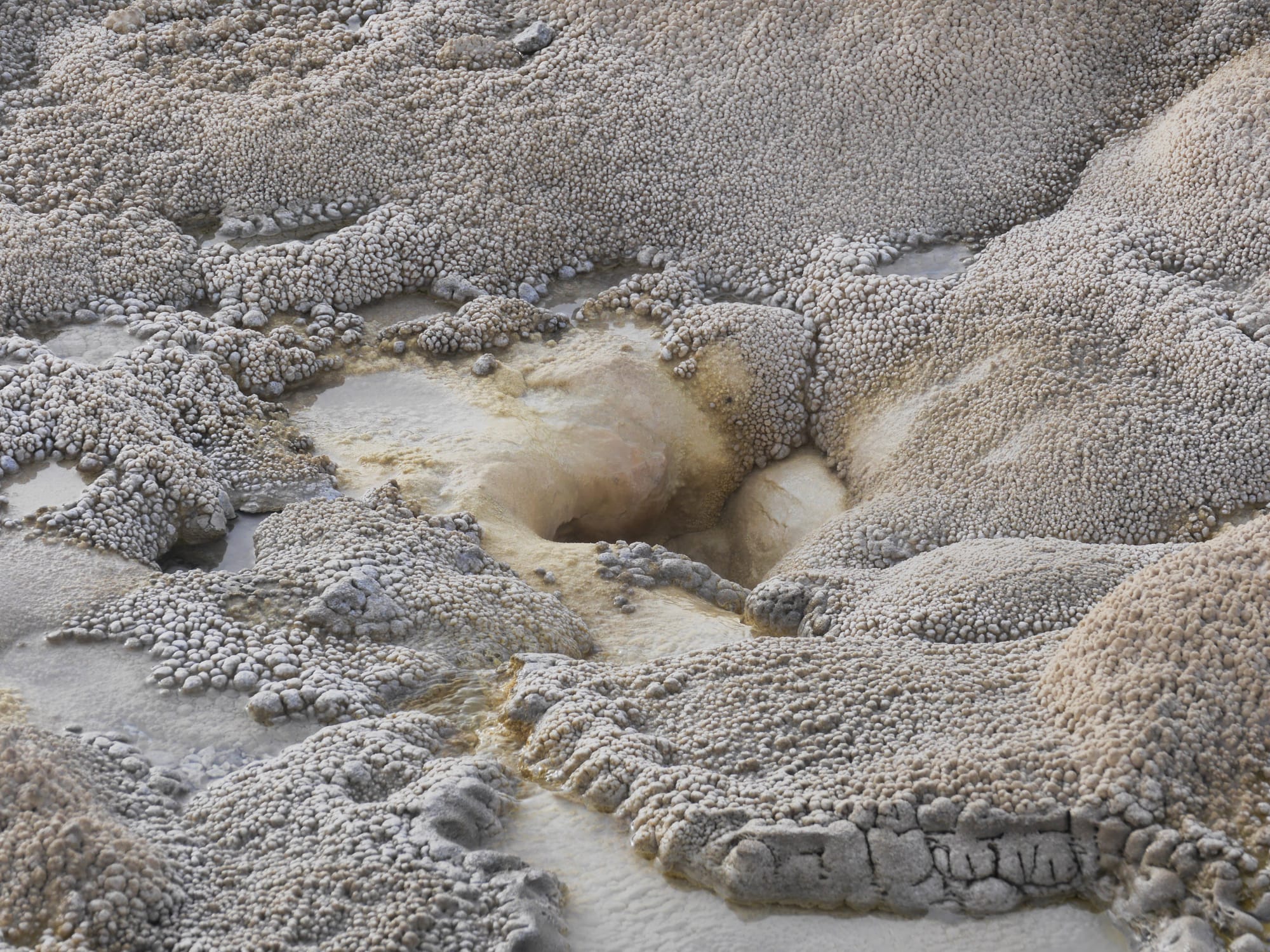
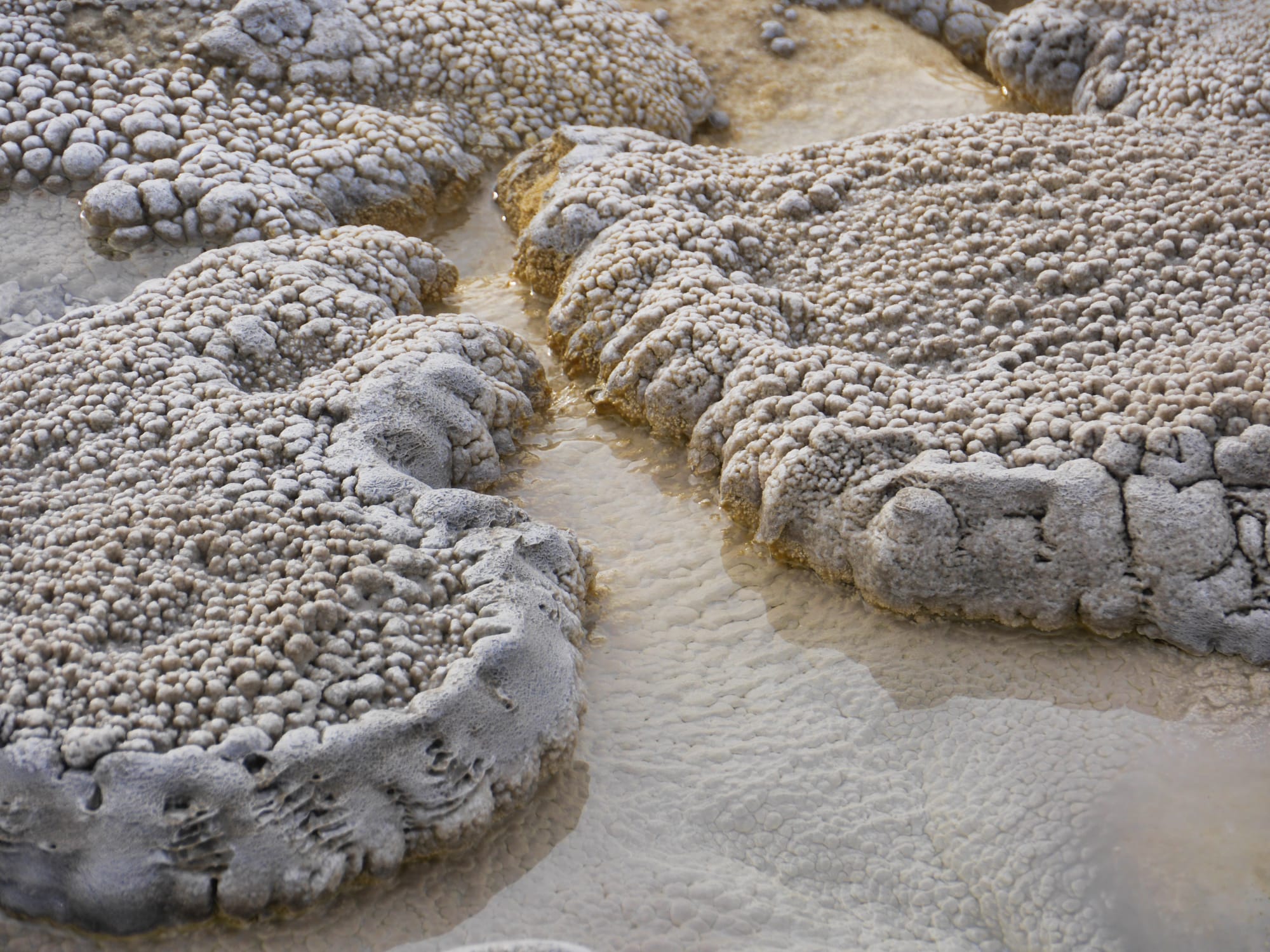
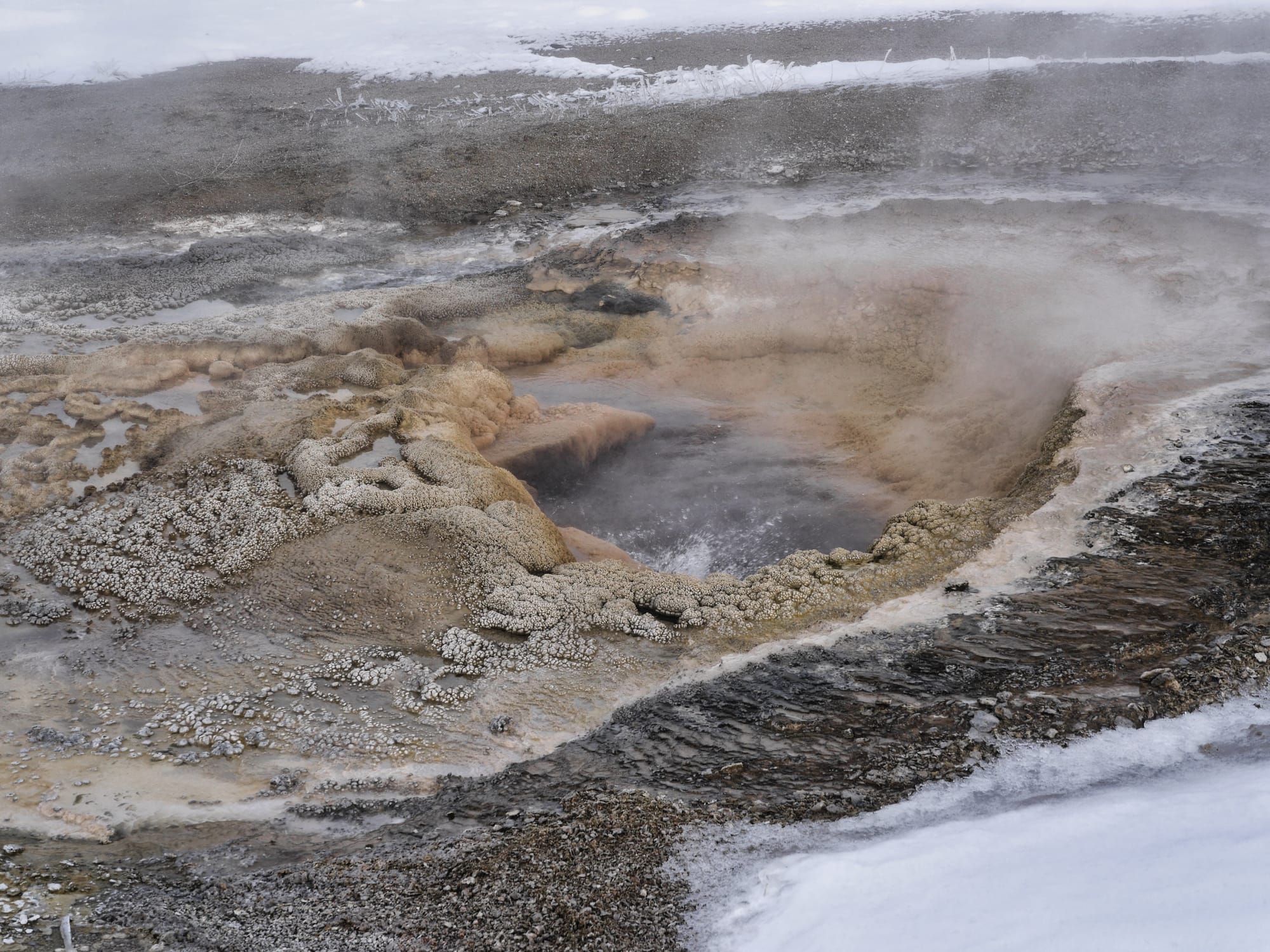
But it was not all geology; there was also some impressive biology.
The ponds and geysers in the park are hot. Deep down in the thermal vents, the water temperatures can be more than the boiling point of water — the water becomes superheated. The pressure of the water in the vent tube prevents the water from boiling. Eventually, the water is heated to a point where the water pressure above can no longer prevent it from boiling. A sudden release of steam at this temperature pushes the water out of the vent, causing the geyser to erupt.
The water is hot in the ponds and flow-offs from the erupting geysers. The water can be up to 95 ºC (200 ºF) as it leaves the geyser, and in the ponds, it can be over 60 ºC (140 ºF). The water is hot, but it can also be very acidic, with a pH of around 3.5. If you fell into a pond, you would be seriously burnt by the water’s heat and the action of the acid.
What is incredible is that plants can grow near the vents and close to the hot water. In winter, they have to strike a delicate balance. Too close to the vent, and they cook. Too far away, and they freeze.
Also, various alga and bacteria grow in the water and form colourful biofilms and mats. The two photos below show such mats growing in the runoff from geysers and in the pools.
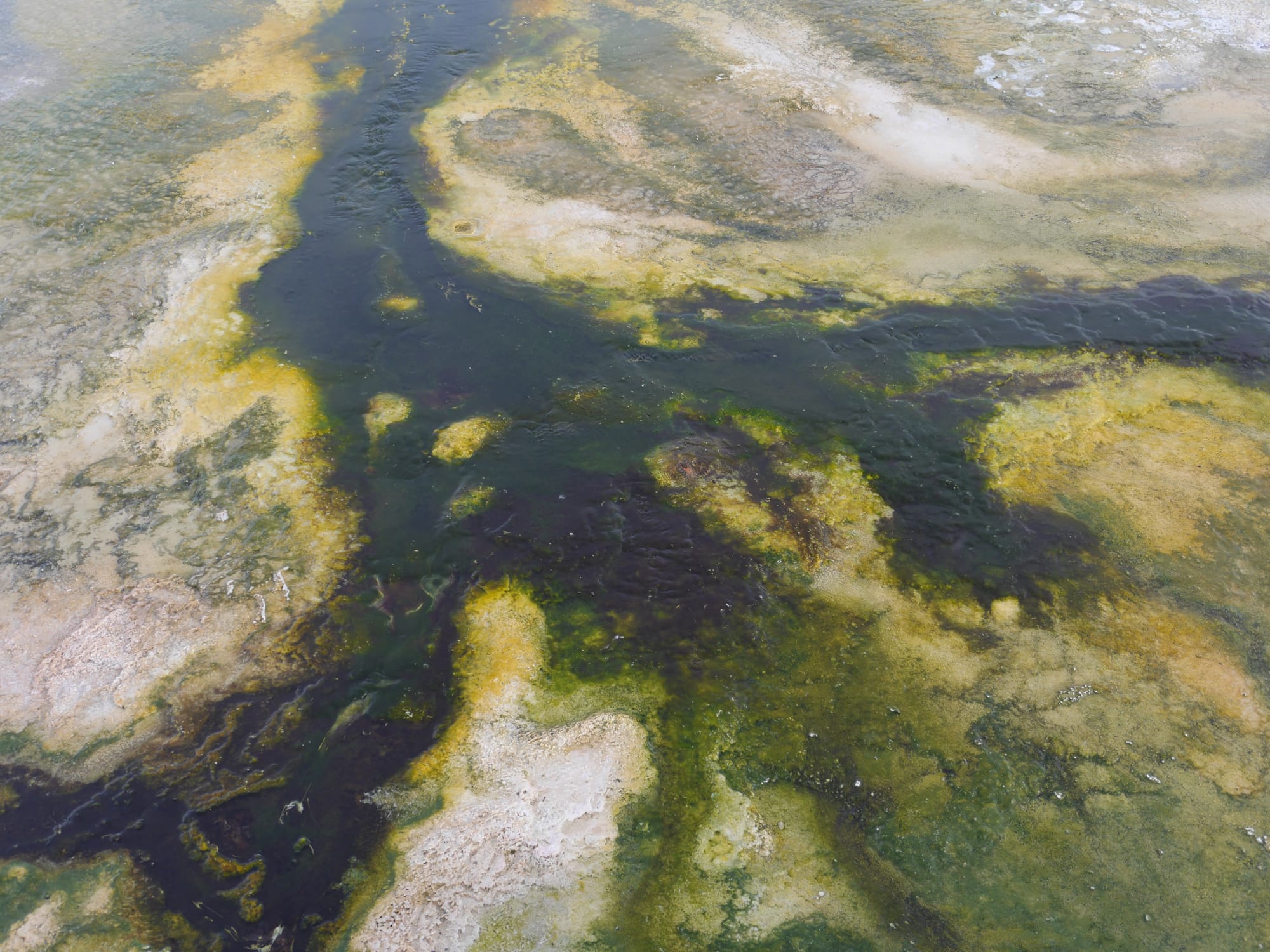
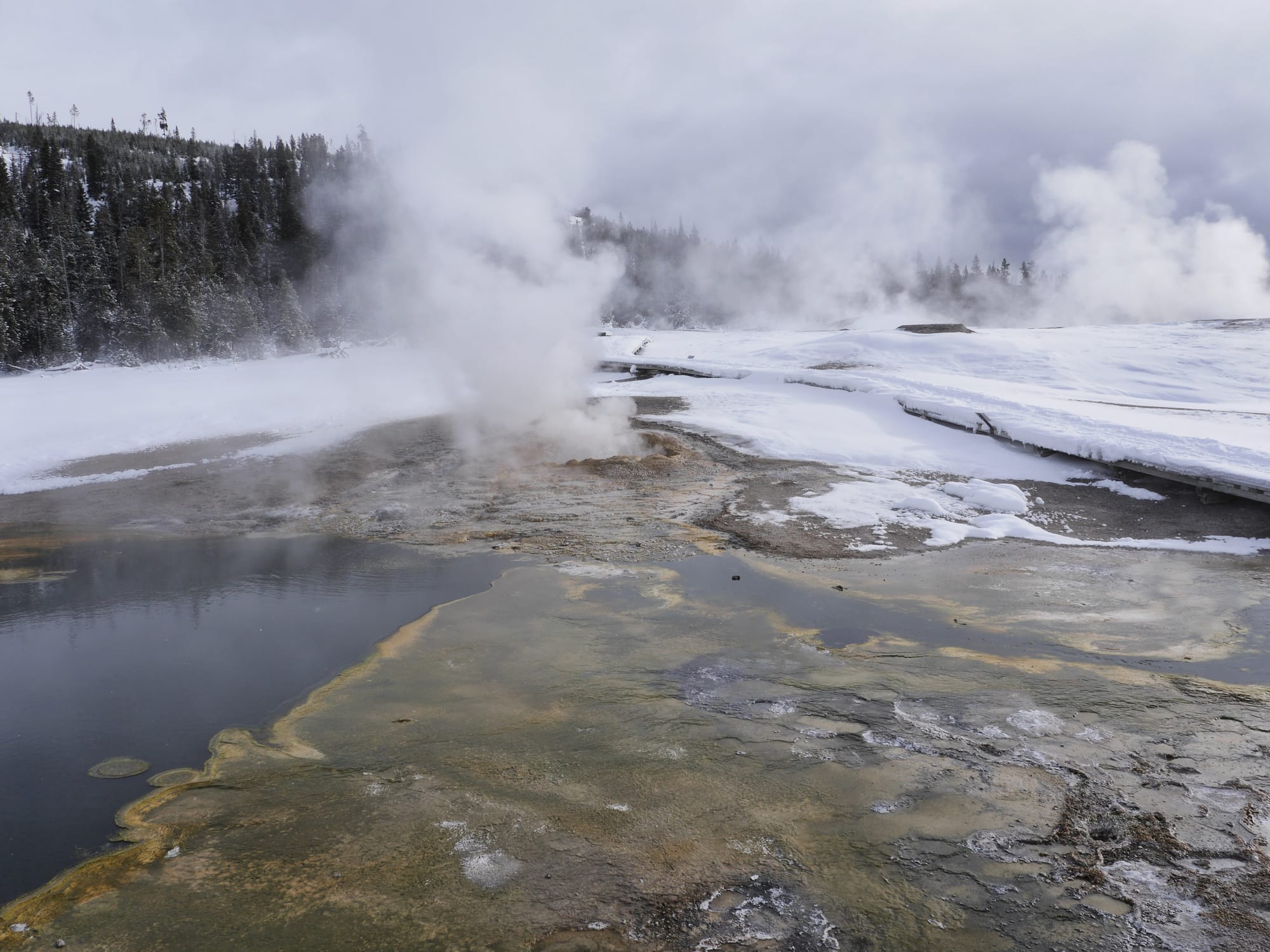
It is thanks to Yellowstone that we have a very useful lab method. The police use the technique to identify criminals from their DNA, and in the last few years, it has become known to most people for its use in diagnosing COVID-19 — the polymerase chain reaction, PCR.
In Yellowstone’s hot springs and pools, you will find thermophilic or heat-loving microorganisms.
In 1969, two scientists — Brock and Freeze — isolated a bacteria from Mushroom Spring in the Lower Geyser Basin of Yellowstone National Park. The bacteria — later called Thermus aquaticus — was growing at temperatures of around 65 ºC (130 ºF). In 1976, a DNA polymerase (an enzyme that can make copies of DNA) was isolated from T. aquaticus, and it is this enzyme that is used in PCR.
Just think how difficult diagnosing COVID-19 infections would have been without PCR? How many crimes have been solved thanks to a bacterium found growing in a hot spring in Yellowstone National Park?
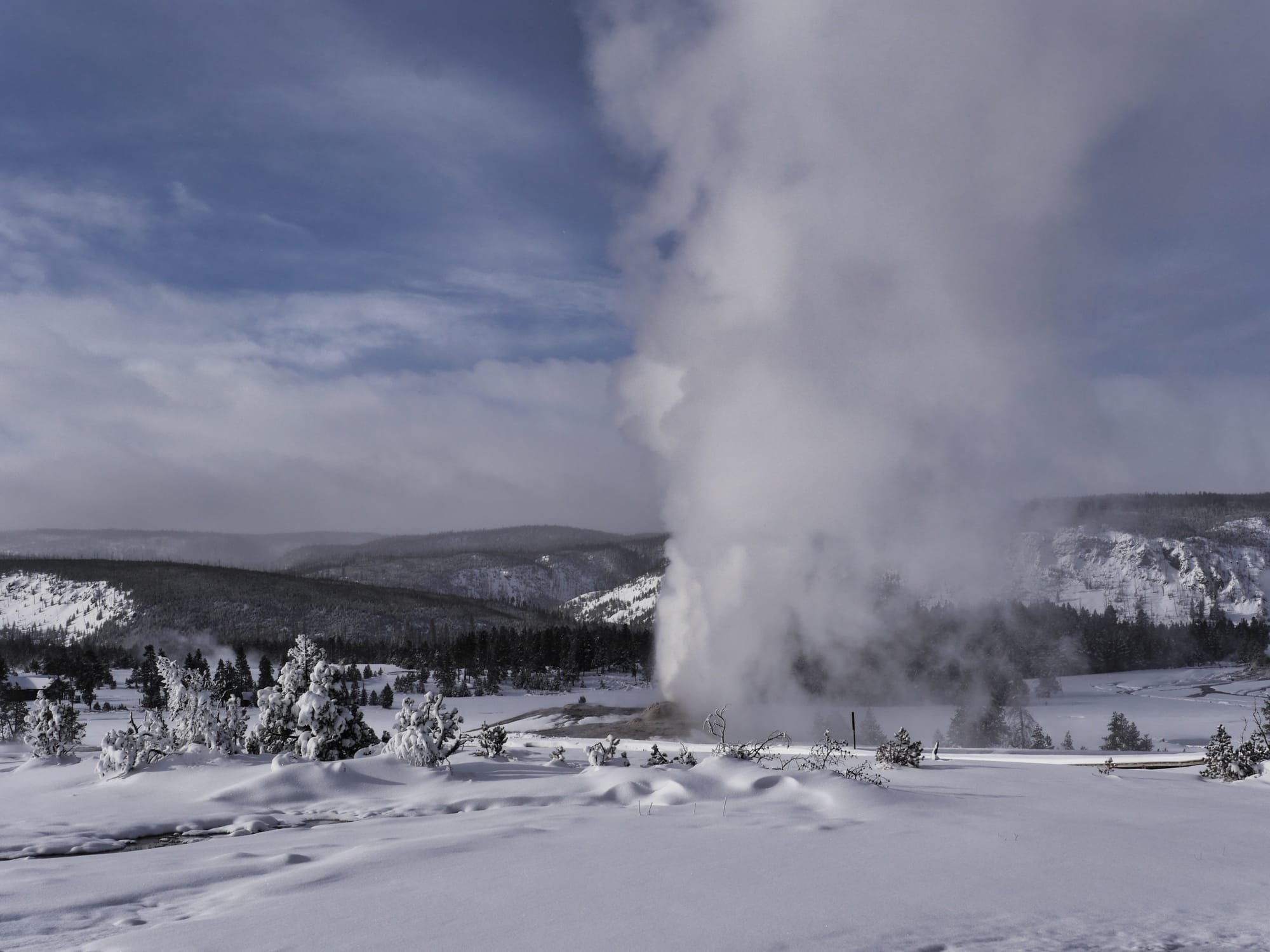
The power of the geysers is incredible. When some of them erupt, they erupt!
And it is not just the water being thrown into the air. There are the sounds of the park, from the explosive firing of the geysers to the constant rumbling of water and steam deep below your feet. There is the occasional silence of a snow-covered landscape in winter. And there is the contrast between the heat of the thermal activity and the cold of the weather that you can feel on your skin. Plus, the smell of sulphur in the air. You experience the park with all your senses.
You should expect nothing less in Yellowstone because you are standing in a caldera. You are standing in the crater of a massive volcano, hence all the thermal activity.
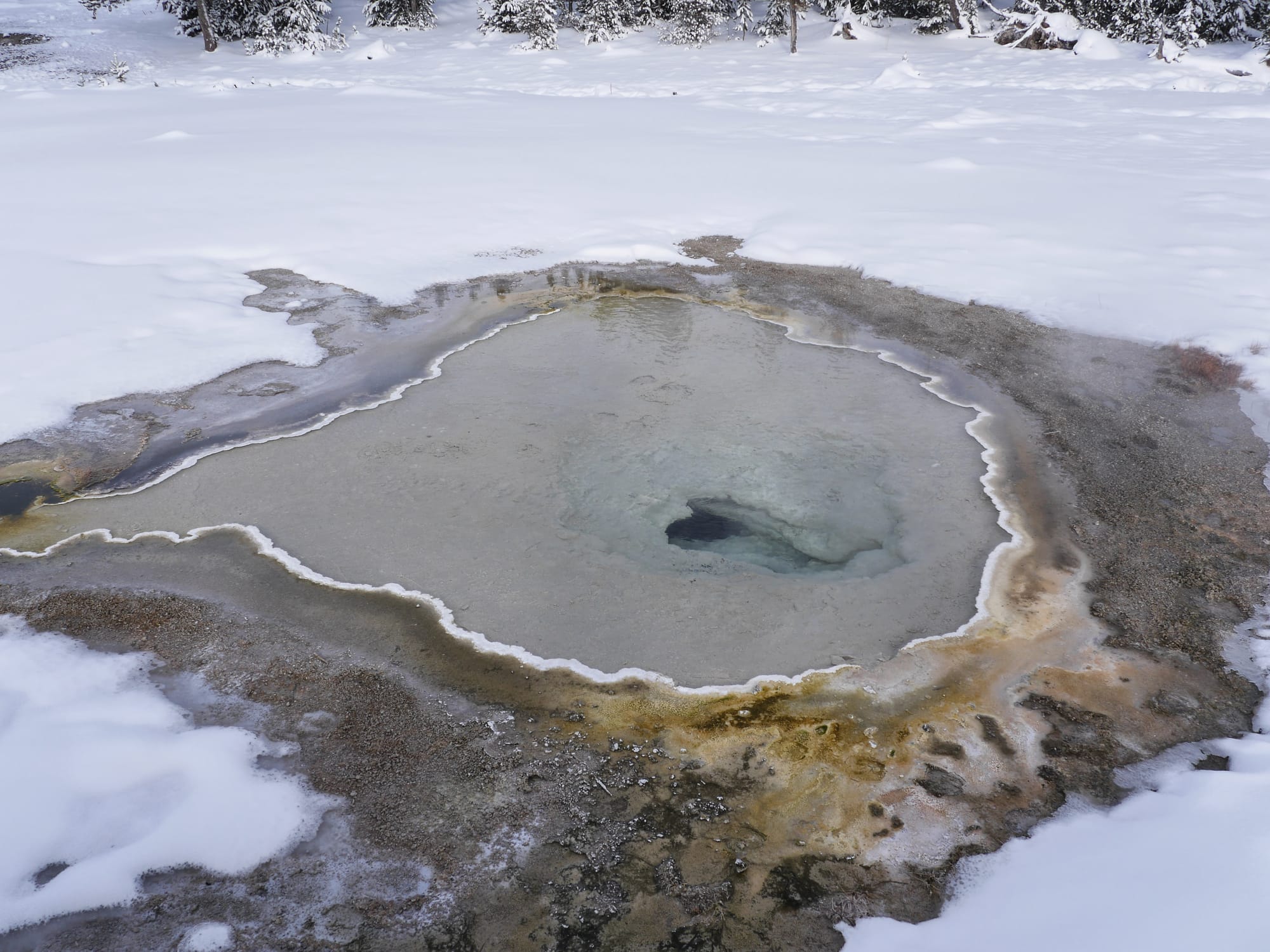
The colour of the pools and the clear water are wonderful.
And there are stunning views across the basin.
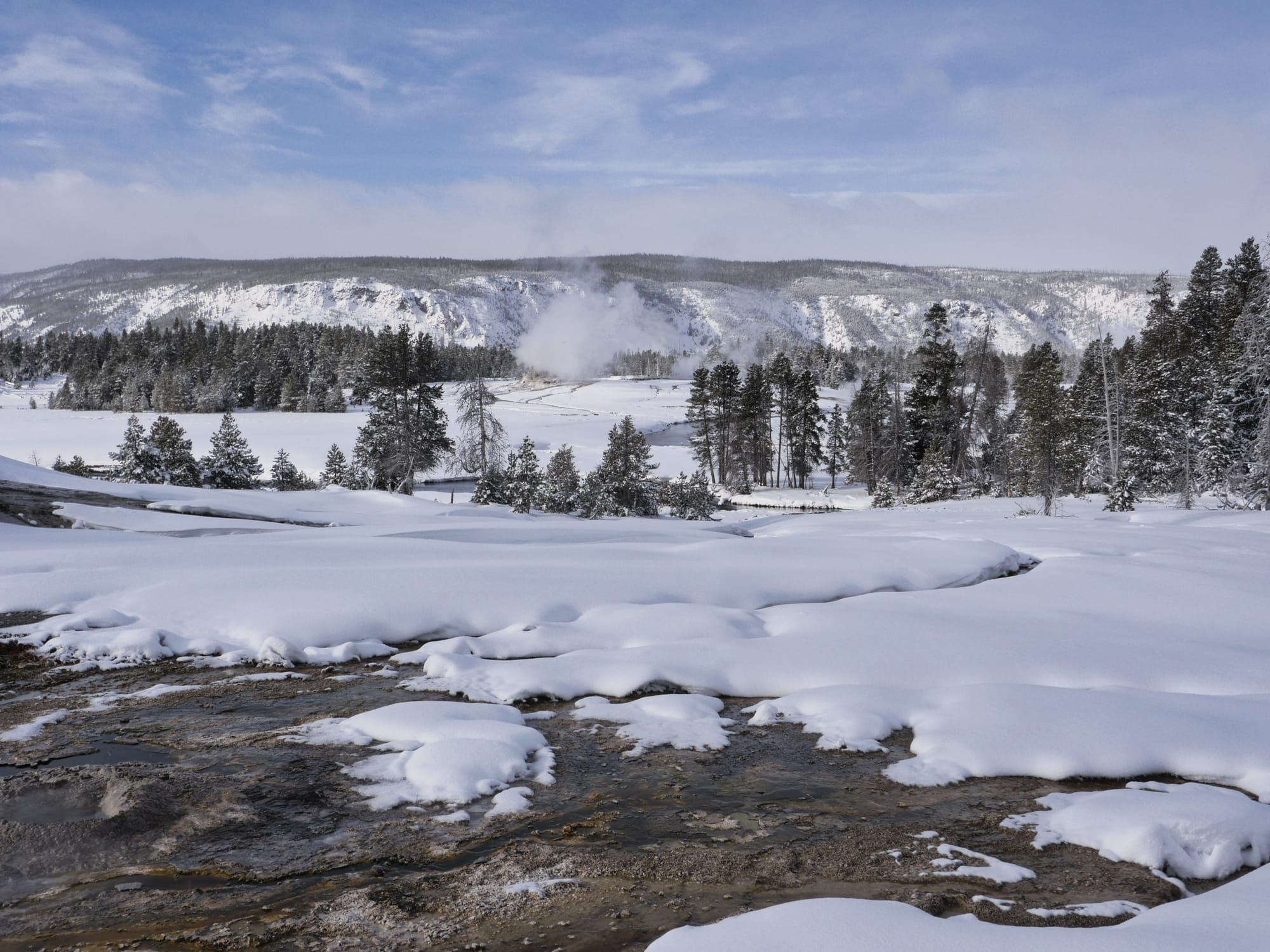
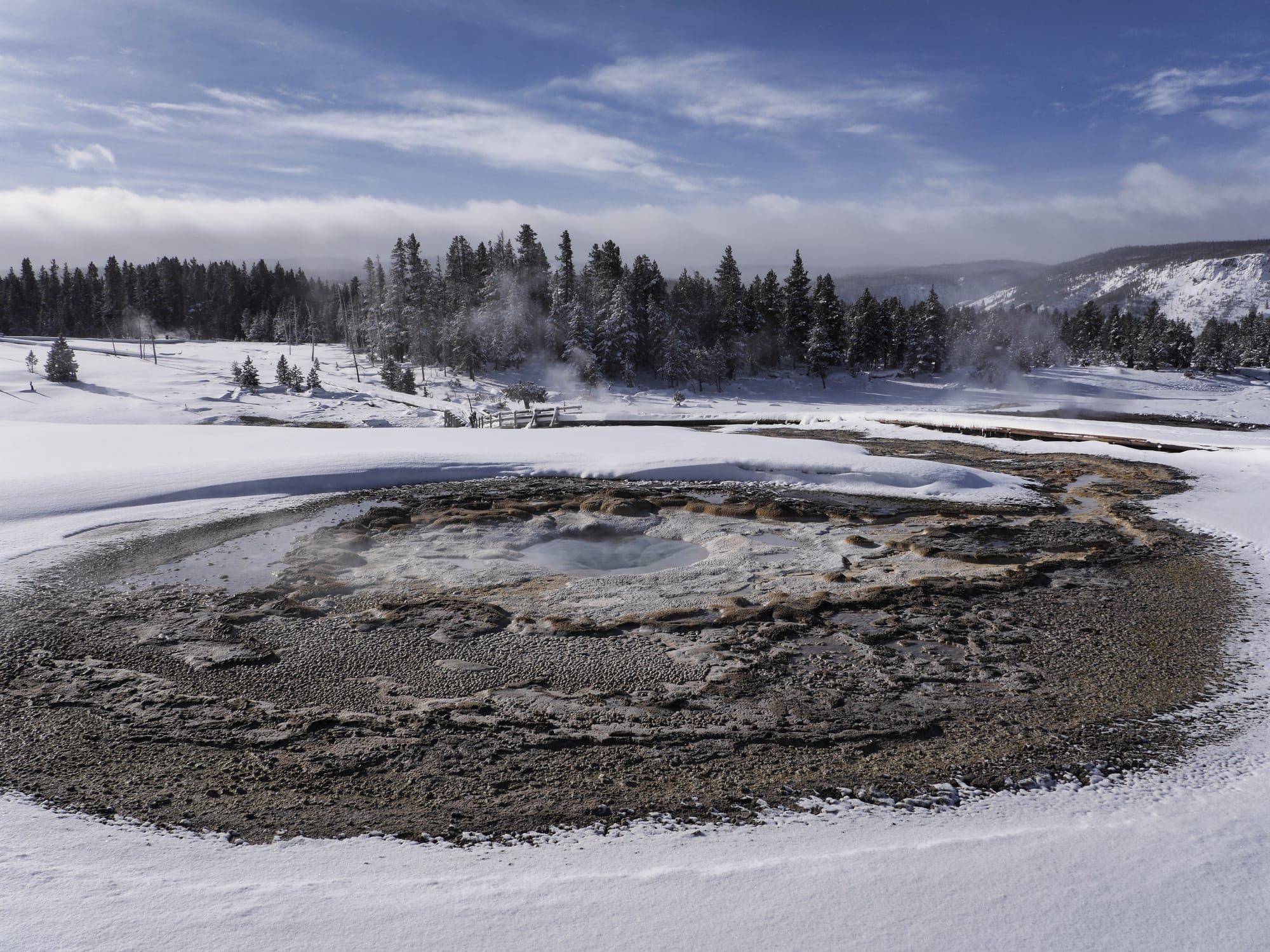
This lone figure silhouetted against the steam from the thermal vents brought home to me how lucky I was to be in the park in winter. If I had taken that photo in the summer, dozens of people would have been in that shot.
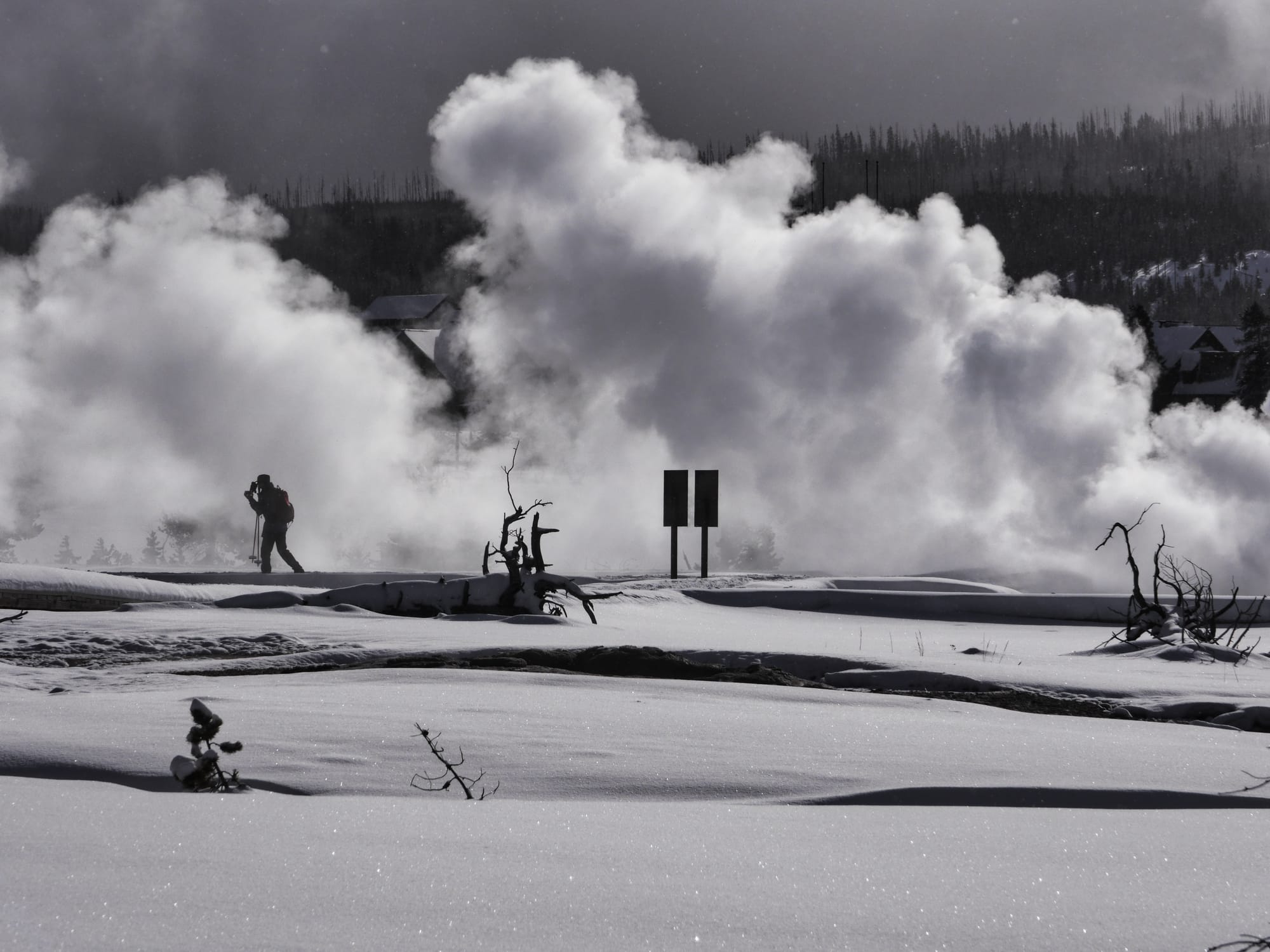
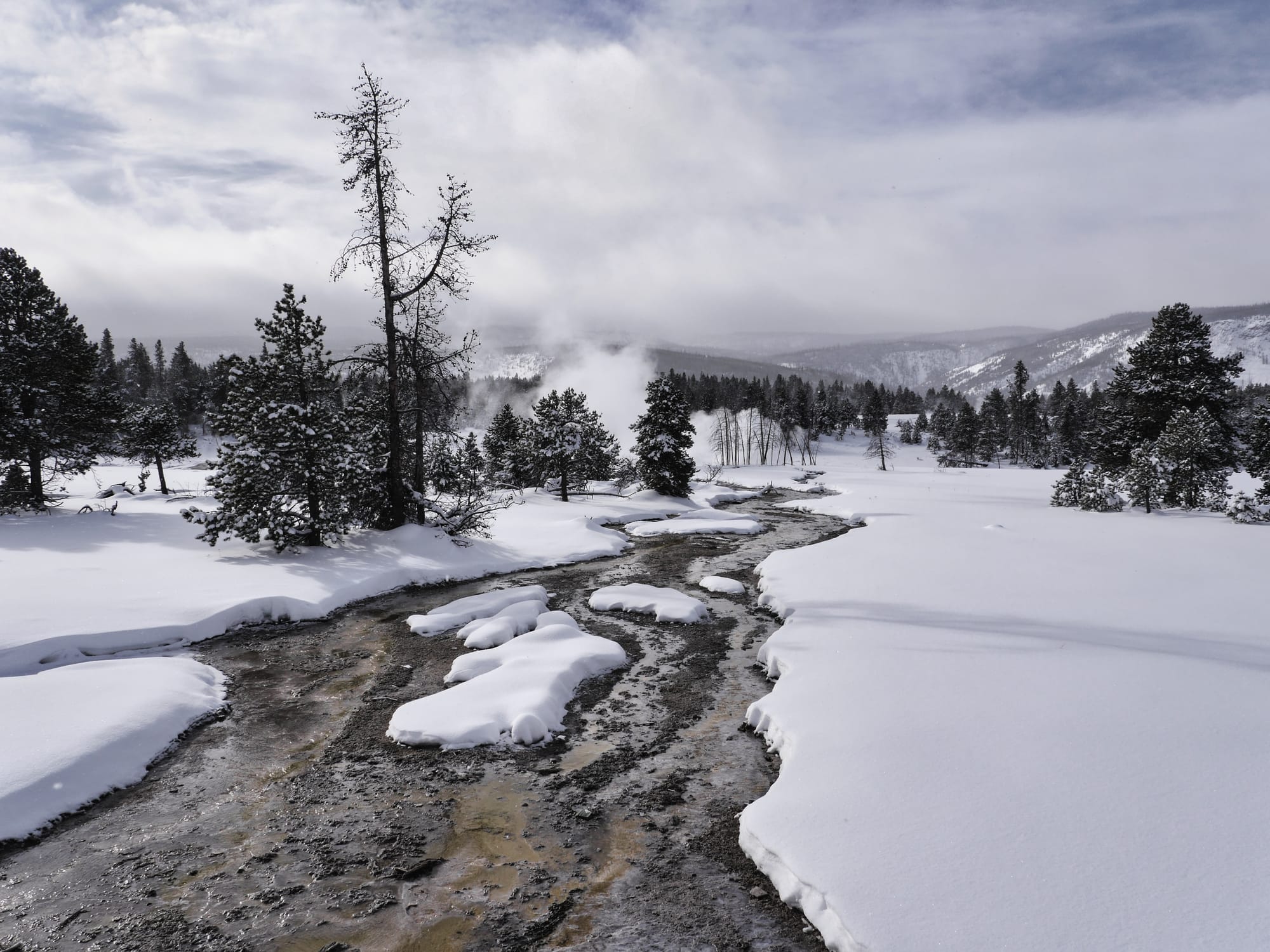
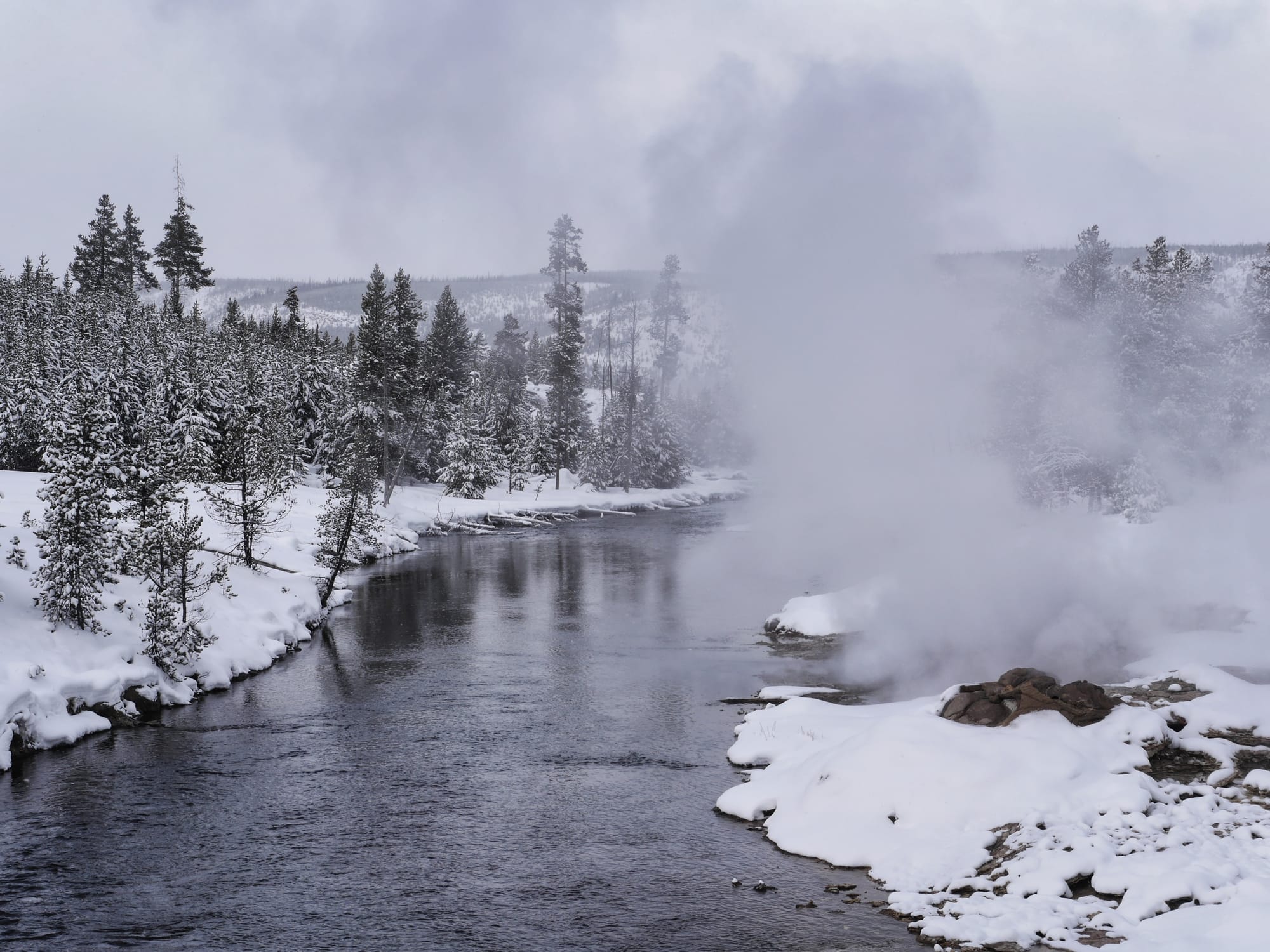
The only large animal we saw during the day was a solitary bison.
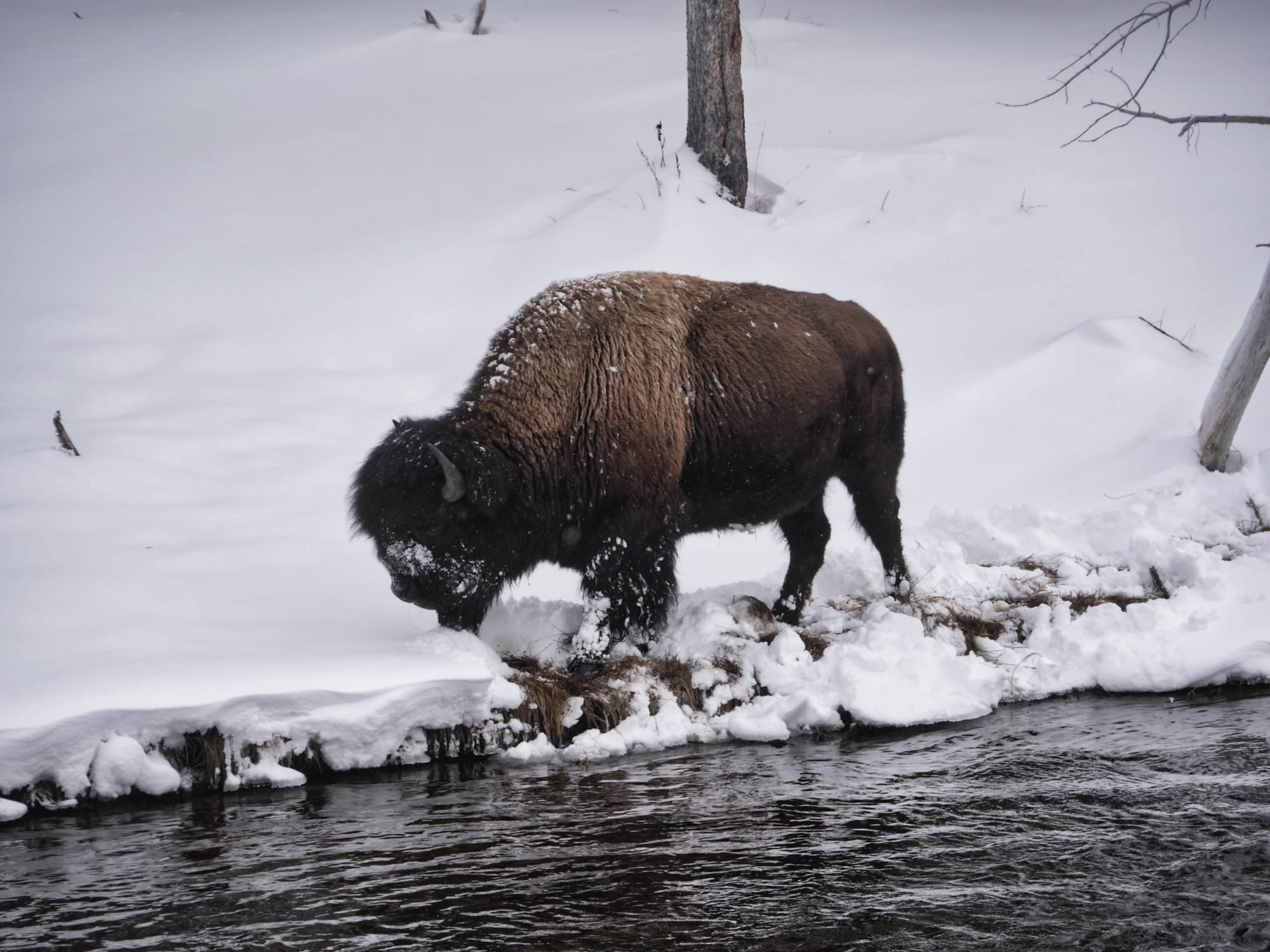
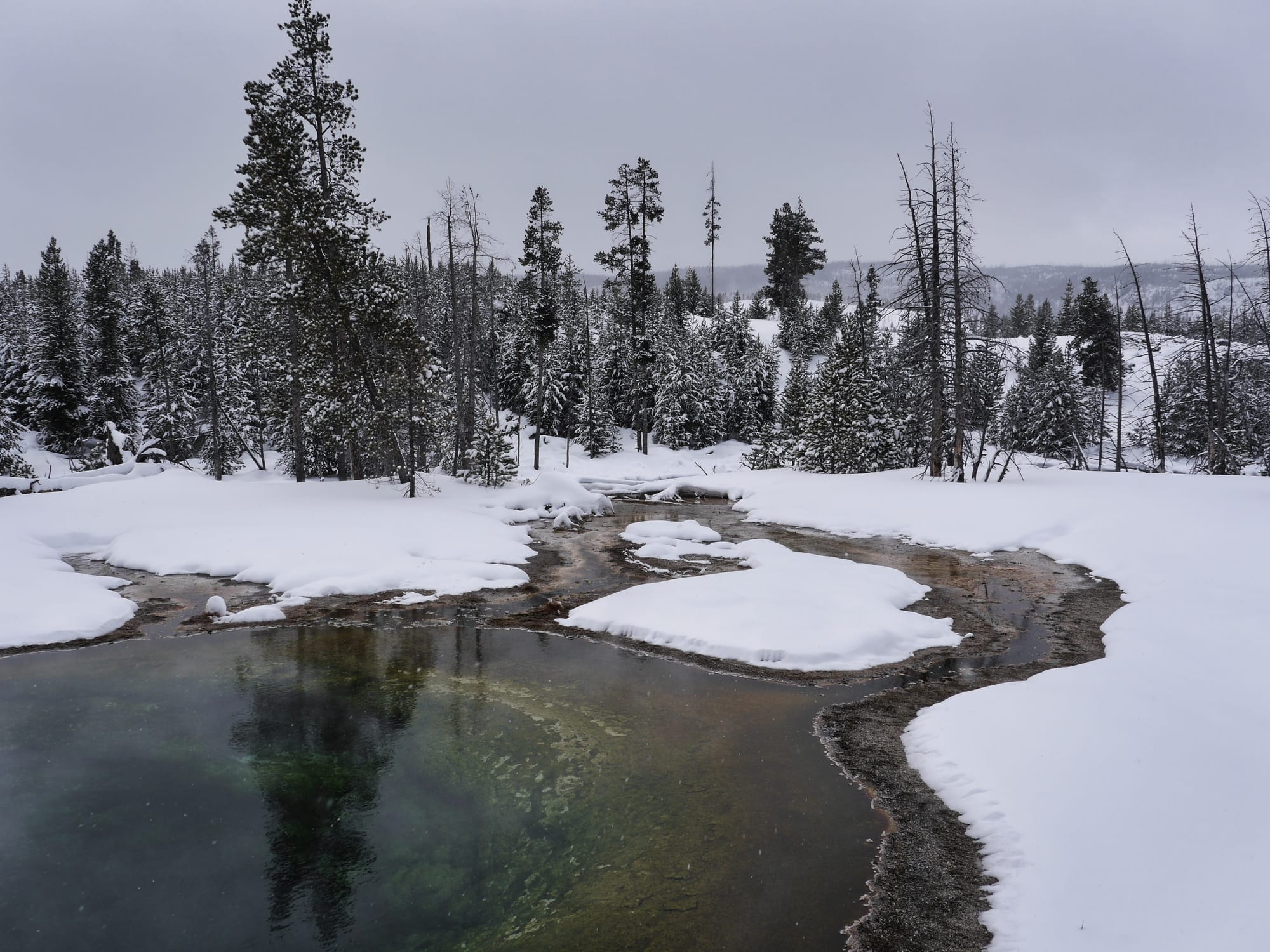
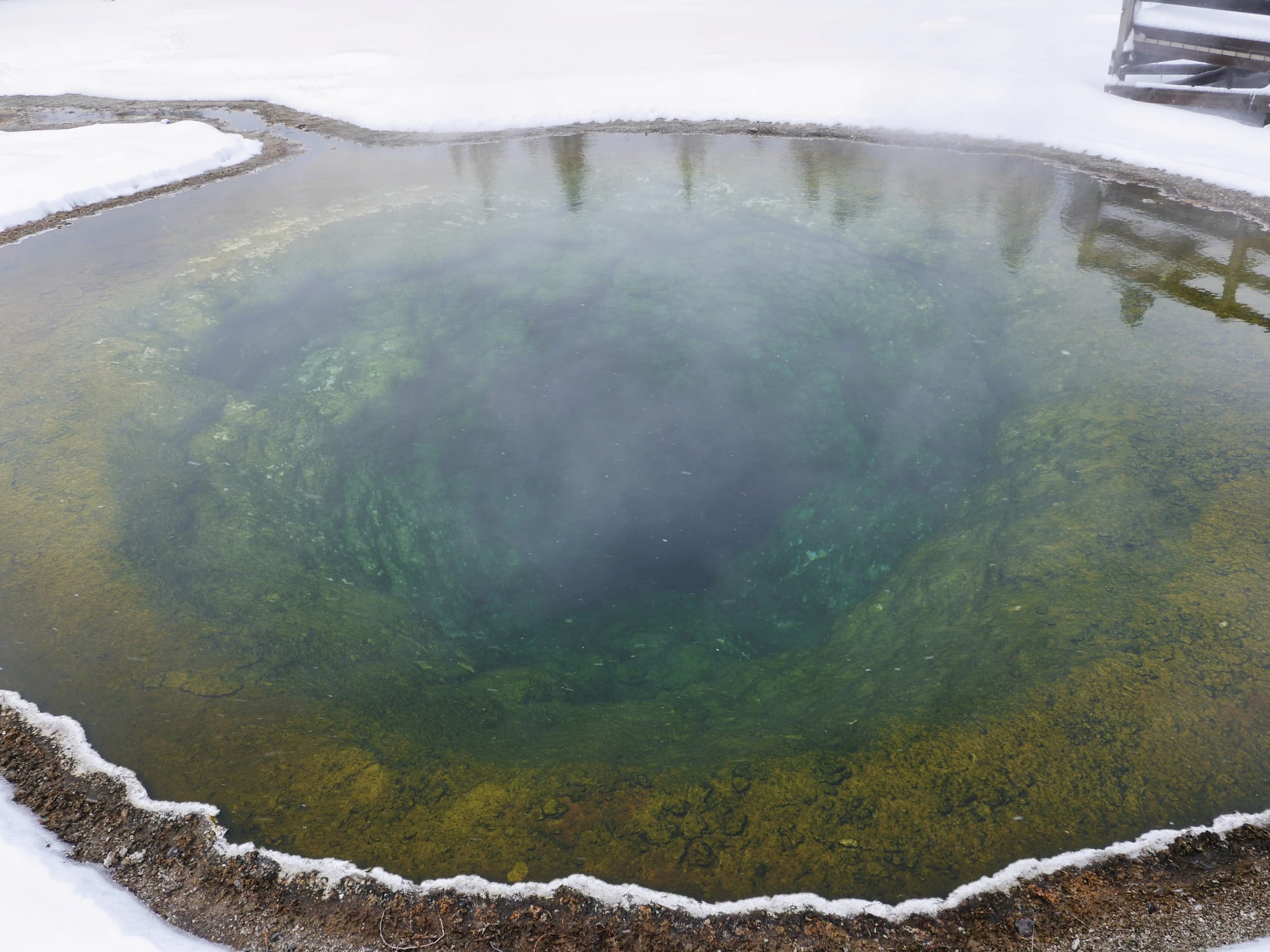
Like in the Norris Basin, the trees were covered in ice formed from the steam.
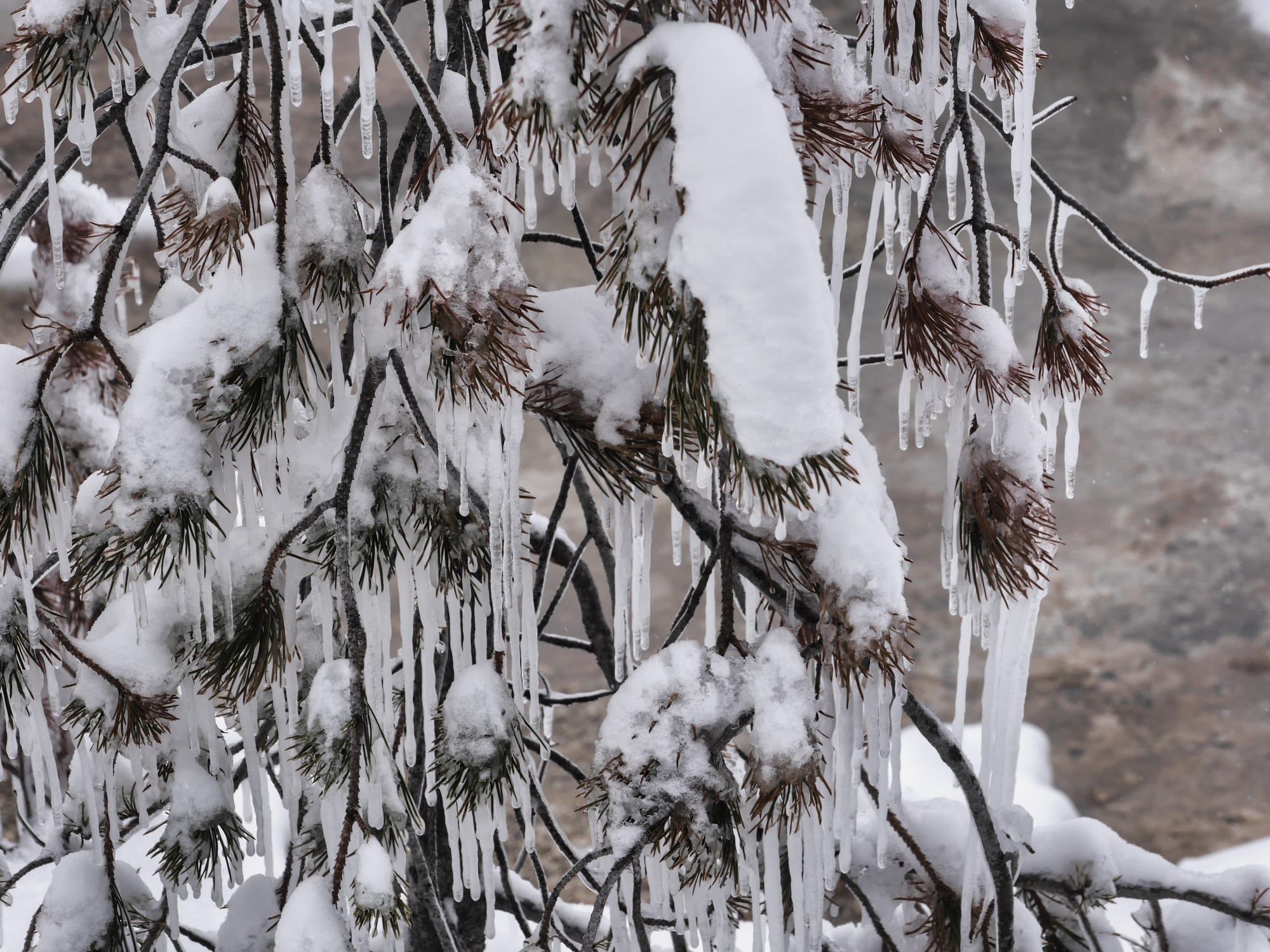
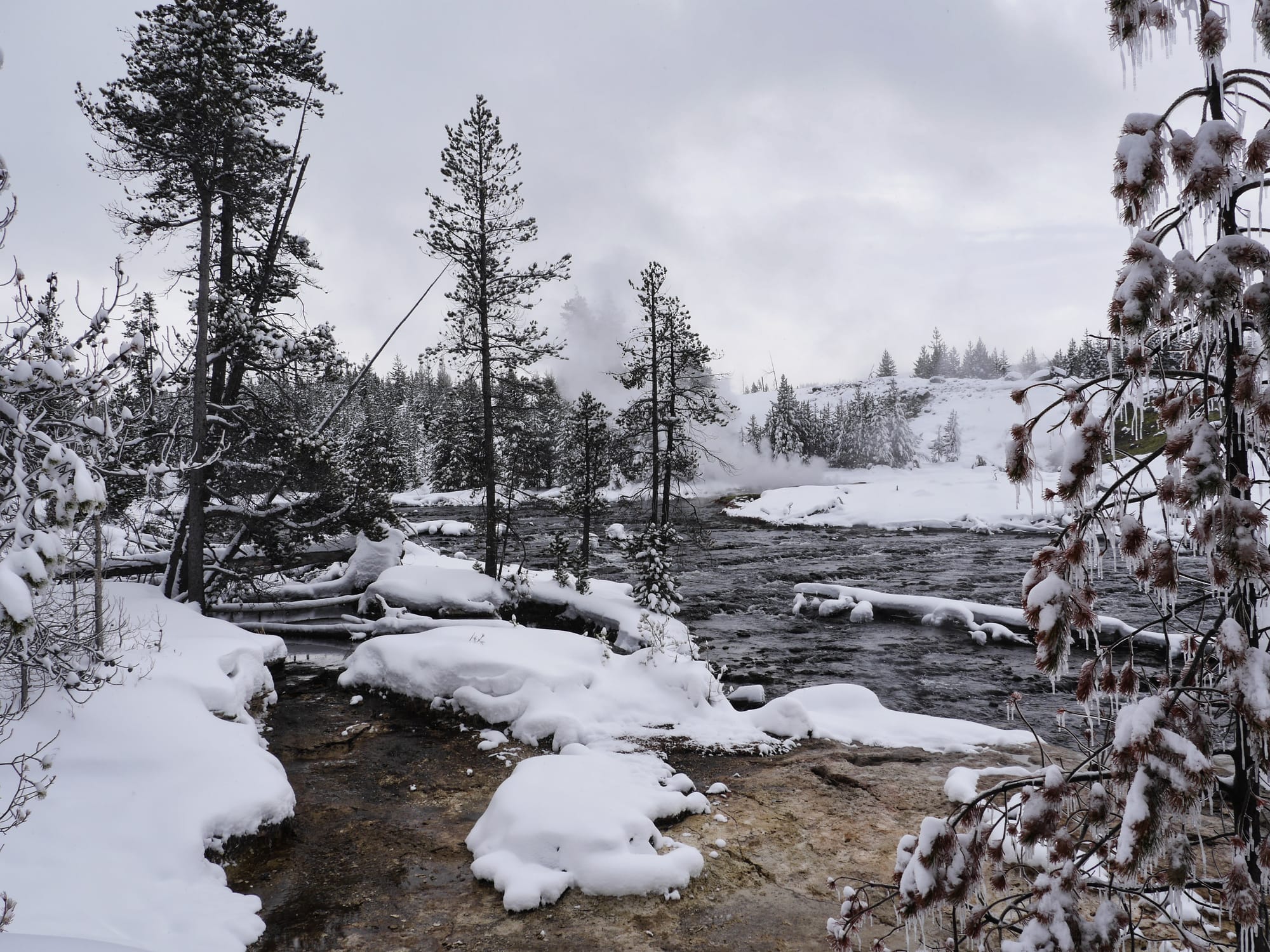
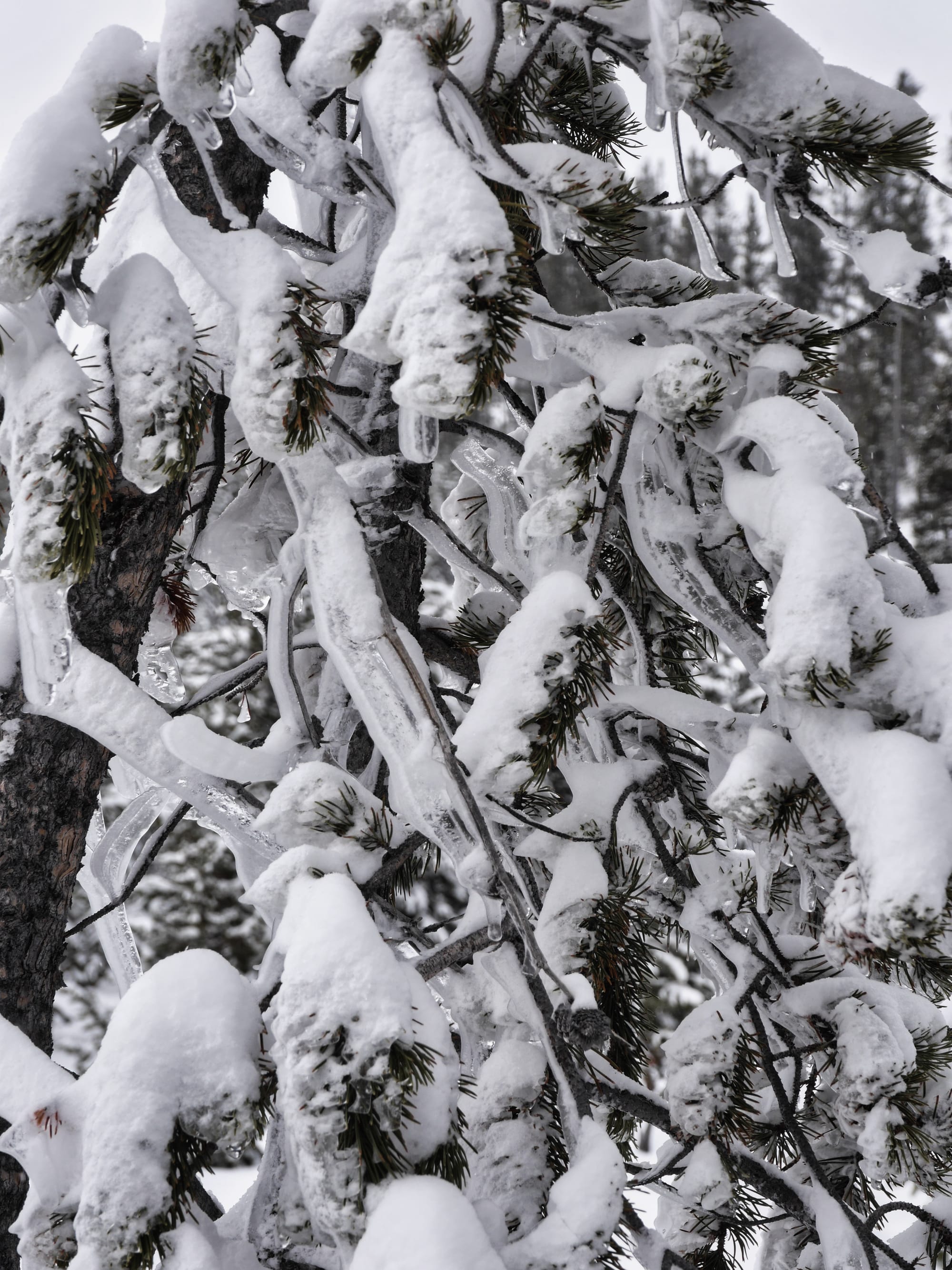
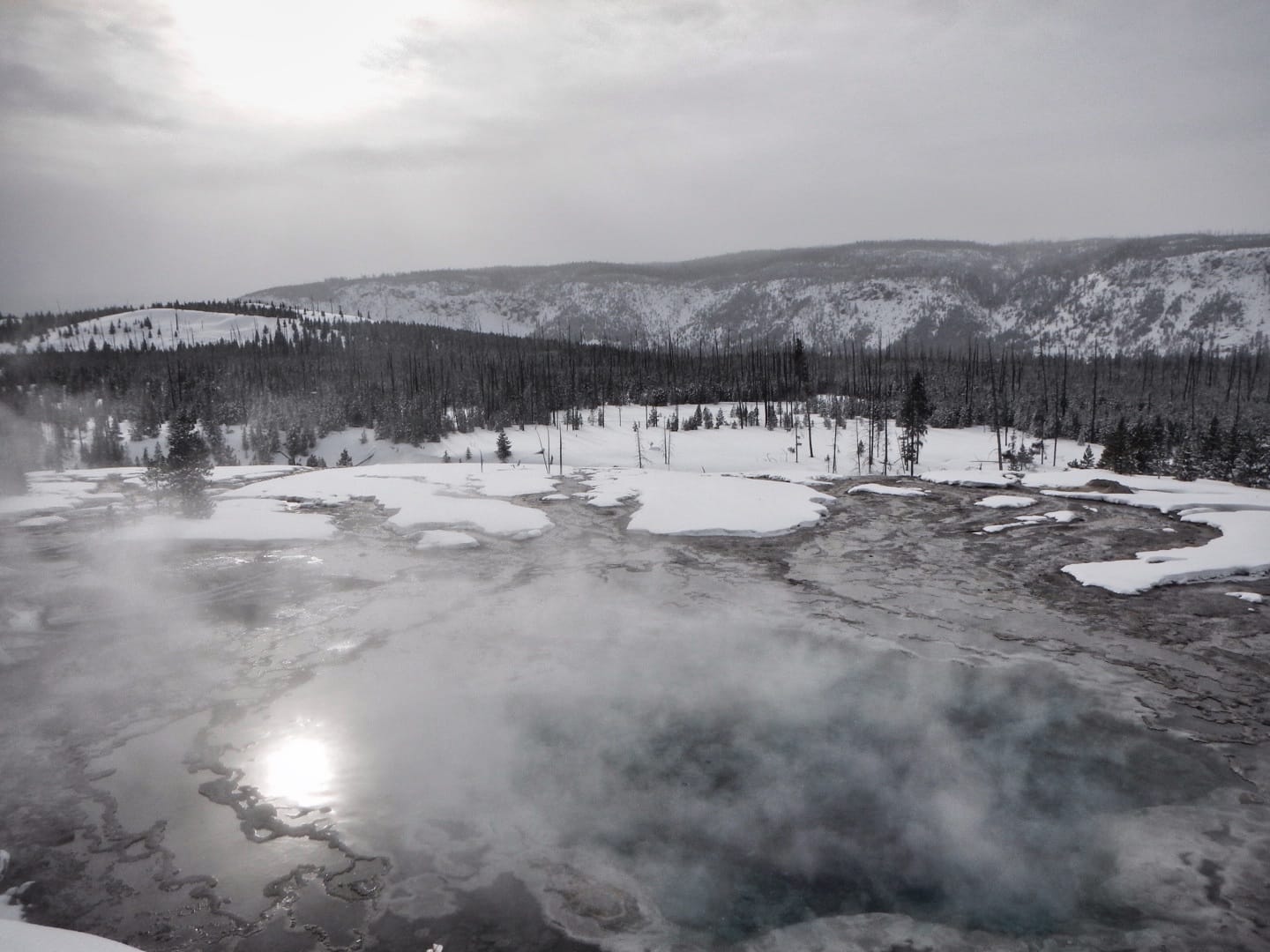
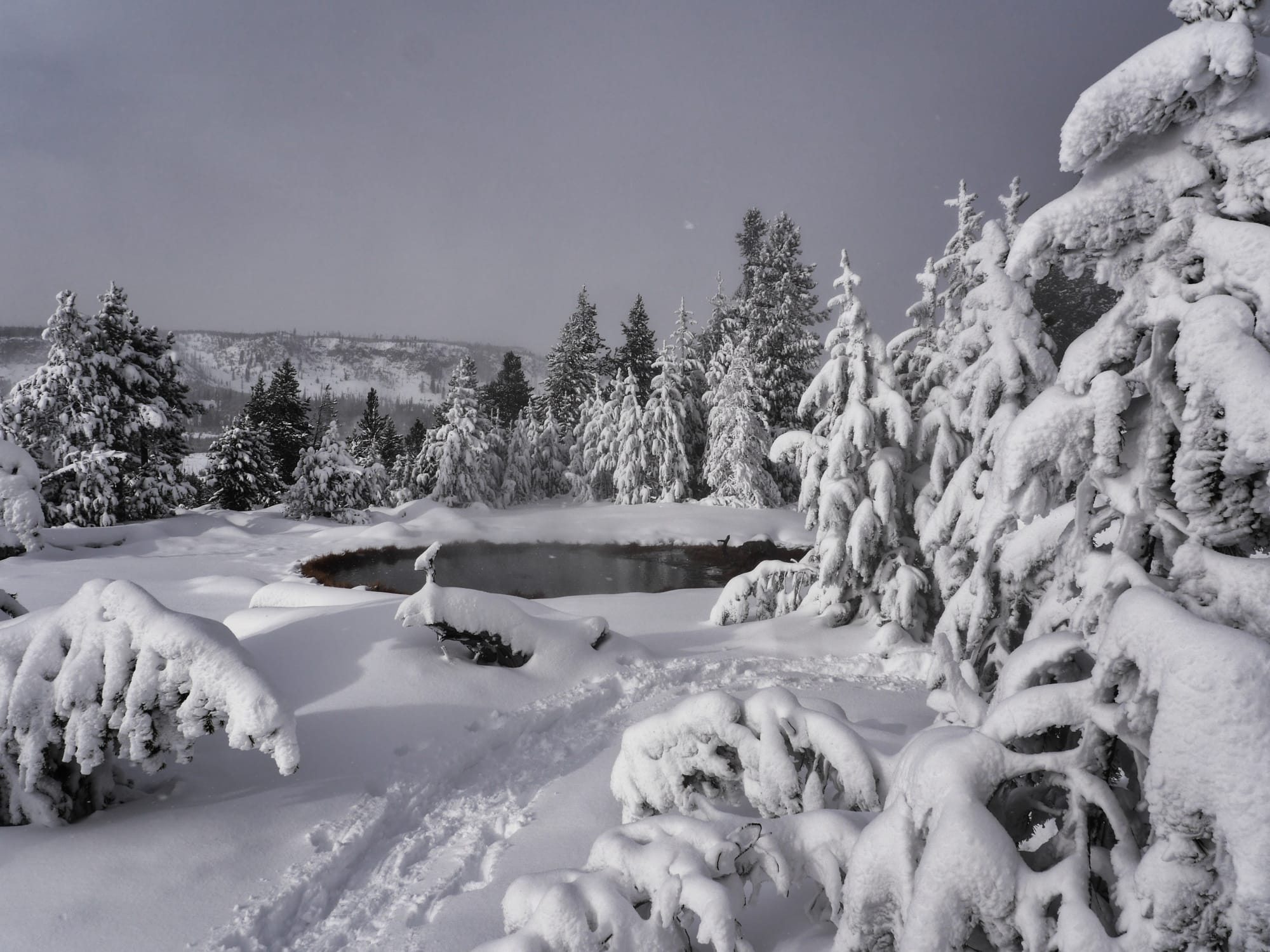
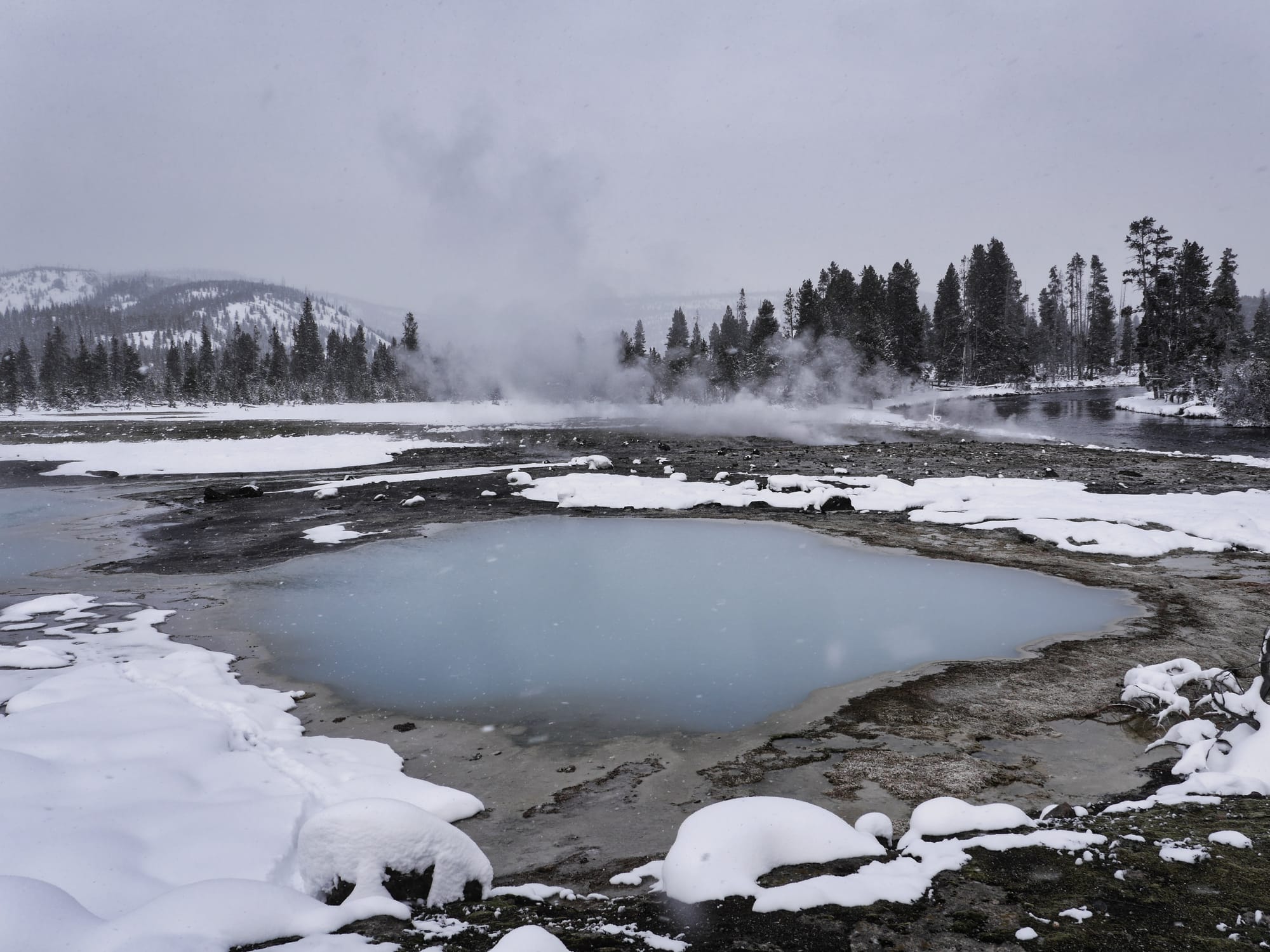
Finally, we stopped back at Old Faithful to watch it erupt.
I couldn’t believe I was standing there with only six other people. When I watched Old Faithful erupt during the summer, several hundred people stood with me on the boardwalk.
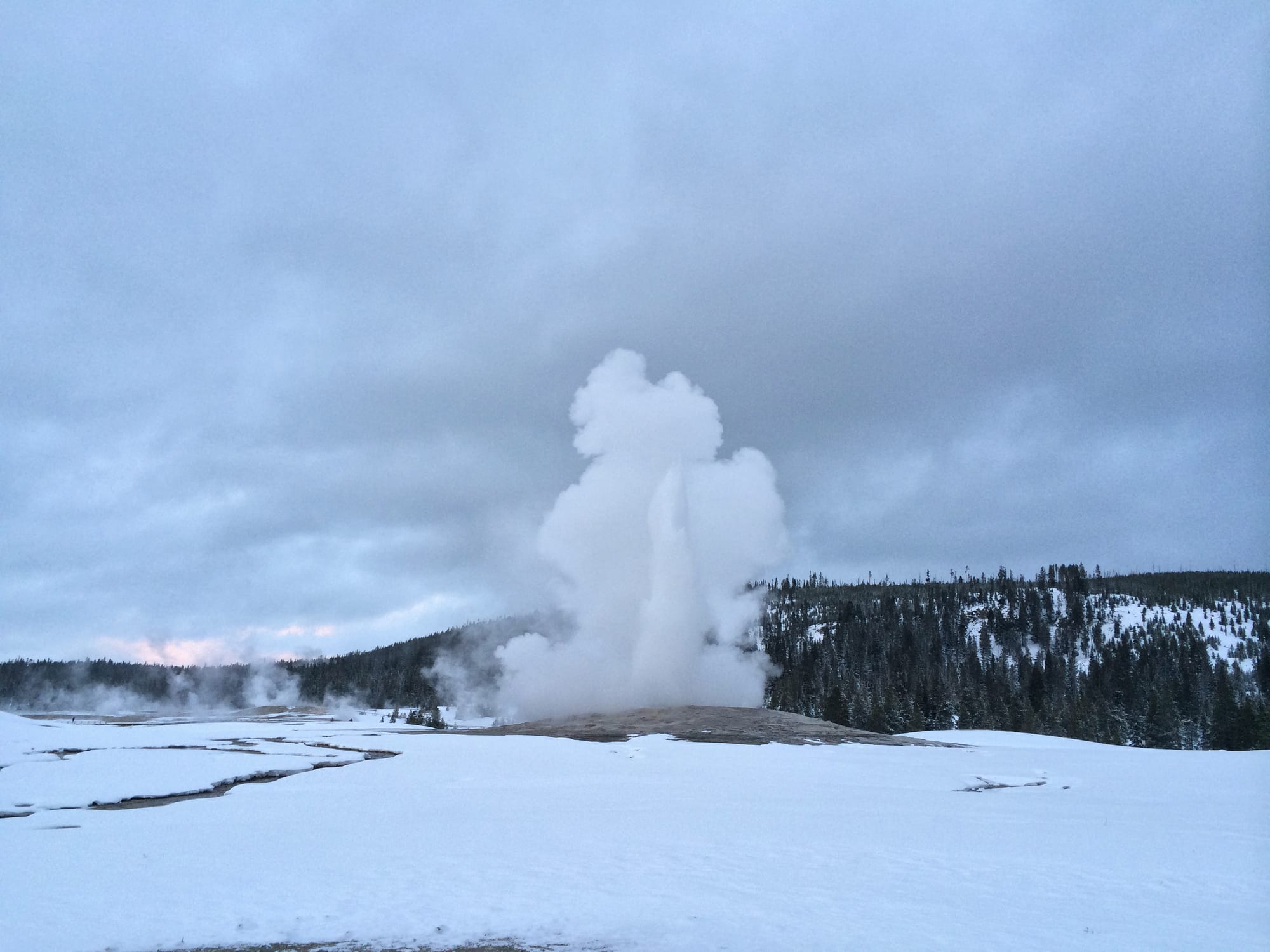
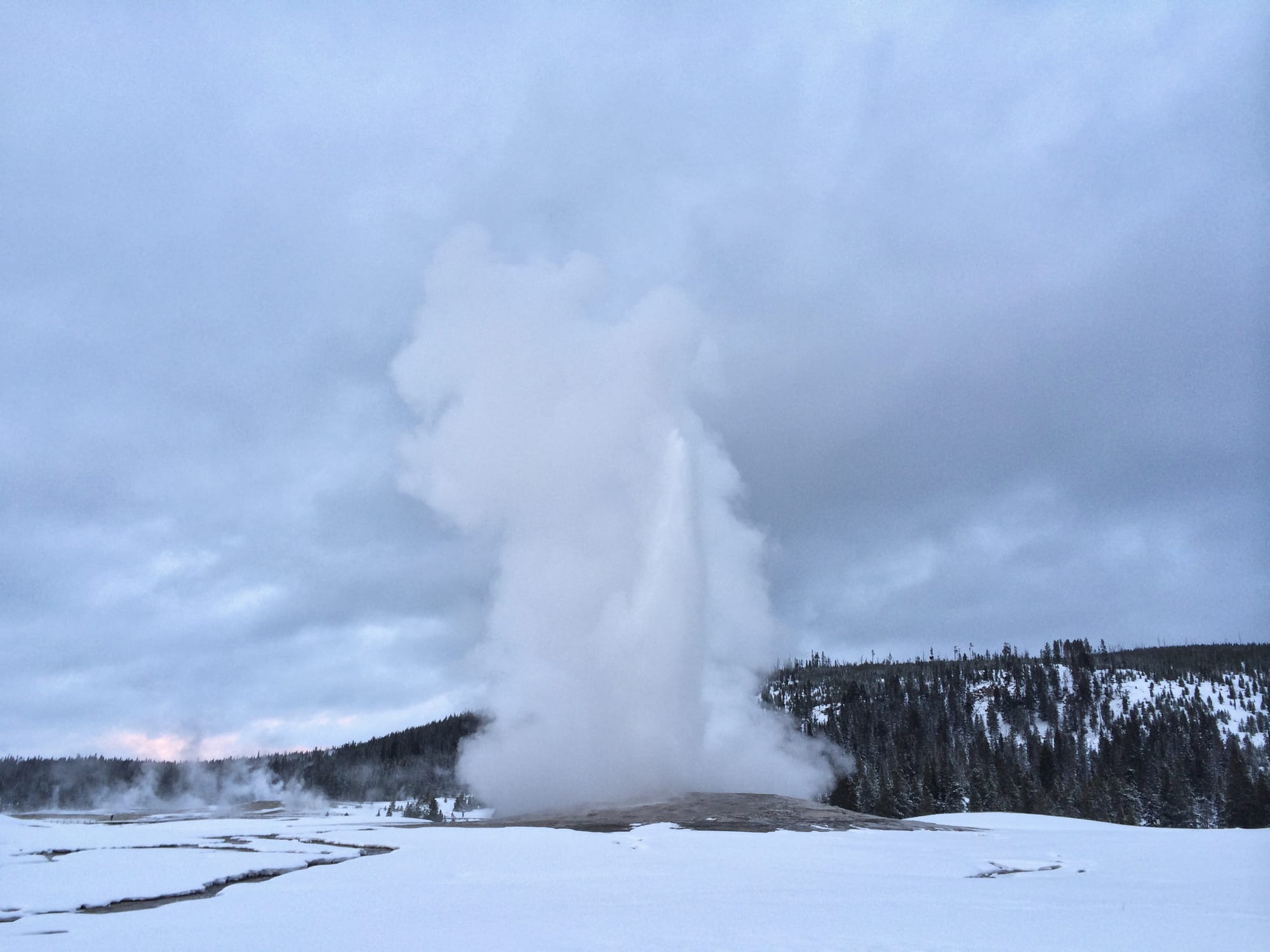
Summary for day 3
I described day two with one word — WOW! How can I describe day three? Double wow? It was closer to WOW multiplied by WOW!
Day three blew me away. It was a real privilege to be in the park, walking around the Upper Geyser Basin with so few people. Magical. Fantastic. Words and photos cannot do the experience justice.
Again, Amy was great. She was an excellent host and guide and took her time to explain things as we went around the basin.
A magical and unforgettable day.
